Excerpts from Jim Conrad's
Naturalist Newsletter
Entry dated November 7, 2023, from notes taken at Cascadas de La Piedad waterfall 3kms NW of the community of San Pablo, municipality of Almeaco de Bonfil; bedrock of thick layers of compacted volcanic ash, or tuff; N20.1024°, W100.0019°, elevation 2360 meters (7750ft); extreme southern Querétaro state, MÉXICO
CHASCOLYTRUM SUBARISTATUM
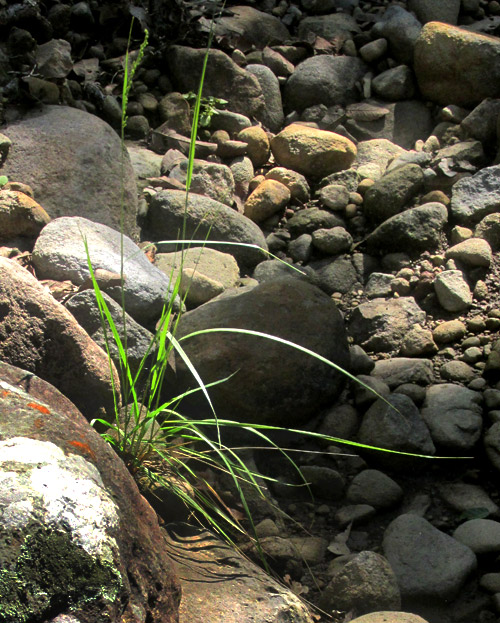
The above grass was the only flowering species rooted among a short stretch of boulders, cobblestones and sand covering the floor of a steeply descending erosional gully surrounded by mountainside oak forest. It caught my attention not only with its isolation, but because its slender flowering heads standing so close beside narrow, up-pointing terminal leaves was a combination of features I couldn't recall seeing in this area.
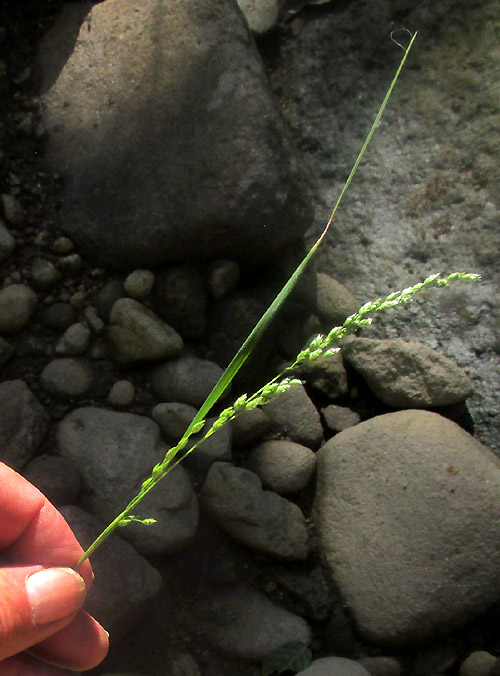
The inflorescence was a branched panicle type, with branches held almost vertically.
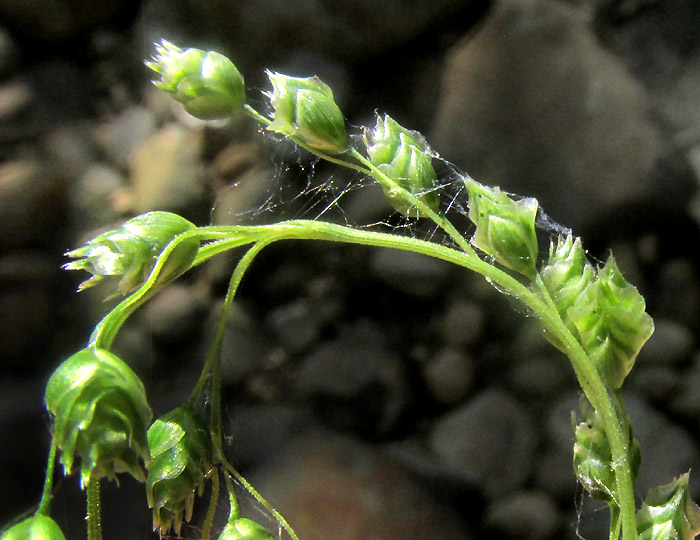
Each spikelet consisted of several florets, and was unusually egg-shaped.
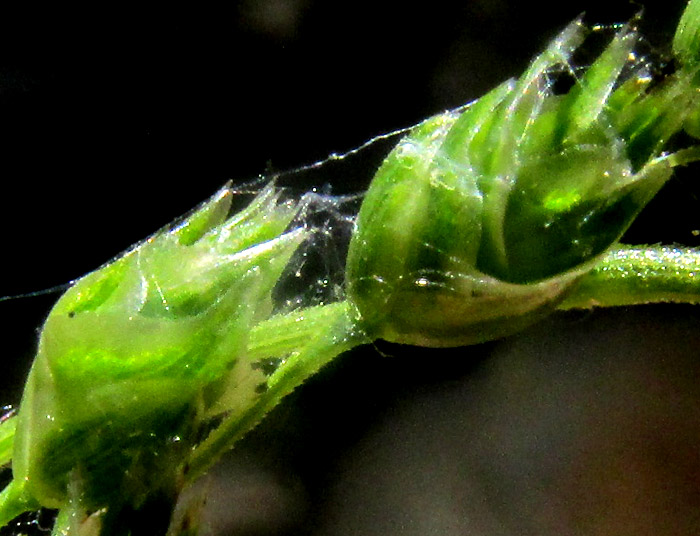
Within the vast, mind-bogglingly diverse Grass Family, the Poaceae, most species with spikelets arranged in panicles and containing more than one floret tend to produce both spikelets and florets which are somewhat flattened. The florets' scale-like lemmas and paleae have their sides more or less folded together, and usually the florets are arranged one above the other, causing the whole spikelet to be flattish. However, above we see that this grass's egg-shaped spikelets were composed of florets whose lemma and palea sides broadly spread apart, resulting in wide, scoop-shaped florets. This was similar to what's seen with the common weedy grass species called Little Quaking-grass. However, that species' inflorescences are diffuse, with branches spread widely apart. Still, our grass surely was something closely related to Little Quaking-grass.
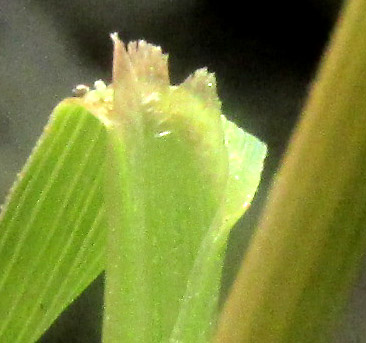
At the right, the ligule was like a thin, papery wall with irregular indentations at its top. Below, the grass's green stem bases of this year rise next to last season's dead, bleached ones, identifying our grass as a perennial.
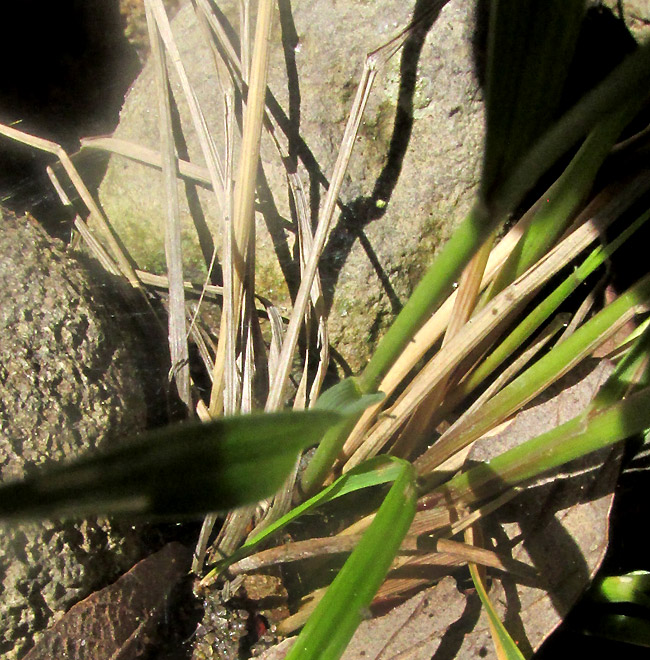
Seeing this grass's close anatomical similarity to Little Quaking-grass, which belongs to the genus Briza, I wasn't surprised when the Flora del Bajío, which documents plants for our region of upland central Mexico, led me to the name Briza subaristata. However, Kew's Plants of the World Online database and numerous other authoritative sources currently regard that name as a synonym of CHASCOLYTRUM SUBARISTATUM. Chascolytrum subaristatum bears no commonly accepted English name, though sometimes, at least in publications still using Briza, it's referred to as Chilean Quaking Grass.
Modern studies have determined that the genus Briza, whose species now are consideredd to be annuals always producing diffuse, widely spreading panicle branches, and are native to northern temperate regions of Eurasia, North Africa and some Atlantic islands. On the other hand, Chascolytrumspecies are perennials capable of producing various panicle types, and are native to Latin America, from Mexico to Chile. During the last several years of genetic analysis, over a hundred species have been shifted from Briza into several other genera. Little Quaking-grass, being an invasive in the New World bearing Old World genes, remains a Briza.
Chascolytrum subaristatum is described as inhabiting a variety of environments, from natural grasslands to roadsides and many kinds of disturbed areas, and in several soil types, even sandy soils near the coast. In temperate and subtropical regions of South America it's ubiquitous, and in our upland central Mexican region is described as frequent.
Studies mention Chascolytrum subaristatum as present in Mexican grazing areas, and that livestock eat the species, but I find no mention of it as a particularly important forage plant for livestock. However, the 2013 study by Fernando Barri and others entitled "Dieta de la población de guanacos (Lama guanicoe) reintroducida en el Parque Nacional Quebrada del Condorito, Argentina," found that Chascolytrum subaristatum was one of only four plant species providing 80% of the diet during the hot, humid months, and over 70% during the cold, dry months, of wild llamas, Lama guanicoe, in mountainous central Argentina.